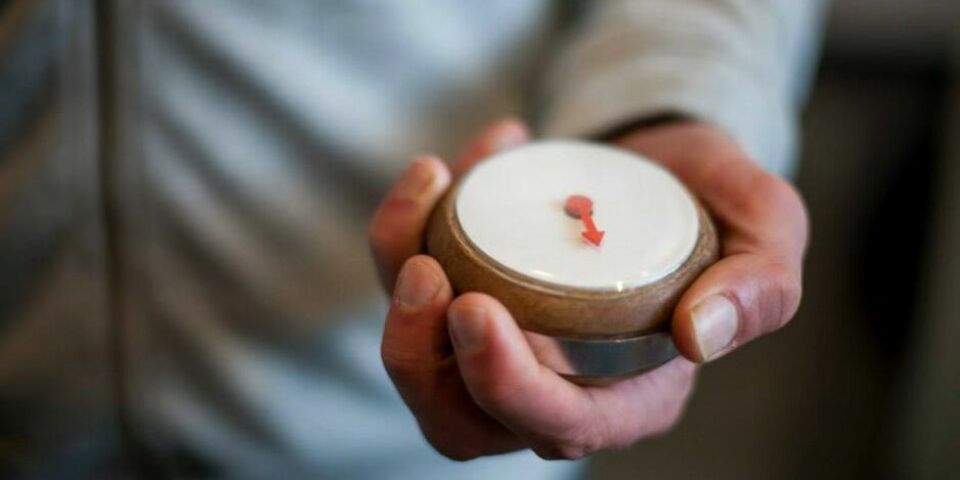Warm ideas wanted for people with dementia
The Expertise Centre Dementia & Technology has launched a student competition with a focus on so-called warm technology. Students are called upon to come up with a concept that gives people with dementia a positive experience with an emphasis not on the disease, but on the individual.
The design challenge falls within the Expertise Centre Dementia & Technology, which was established six months ago and introduced a novel approach to technological design: warm technology. This kind of technology focuses on the wishes and needs of individual patients instead of on solutions to compensate for limitations due to their dementia.
“Warm technology is a relatively new term,” professor Wijnand IJsselsteijn says. “We first published about it a year ago, in the Journal of Positive Psychology, among others. “But the term is becoming more commonly used outside our own research environment now. Healthcare institutions, other scientists and companies are also involved now. And the ZonMW and Alzheimer Nederland have also picked up on it. It touches on a problem that’s very recognizable: technology is often too complex and not properly geared to the actual needs of end users.”
Alternative answers
People with dementia don’t just want to replace the things they can no longer do, IJsselsteijn says. “They also want to move forward; they want to learn and do new things. A lot of tools for people with dementia focus on triggering memories. But if you ask them what they need, you will get a different answer than when you ask the people around them, such as informal caregivers, healthcare professionals and family members. Dementia is unpleasant, but it doesn’t define who you are. People with dementia can still live meaningful lives, and that’s also what they want. We want to use warm technology to help them accomplish those wishes and goals.”
With the design challenge, IJsselsteijn asks students to come up with ideas that are in line with that warm technology philosophy. These ideas can relate to the ethical and human-centered challenges of emerging technologies, such as artificial intelligence (AI), socially assistive robots (SARs) or virtual reality (VR). But the students have lots of freedom to present their own ideas - preferably based on real needs of people with dementia. Students can present their ideas in various forms, including a mock-up, functioning prototype, design probe, video, of simply a conceptual vision.
Less is more
But how exactly do you investigate whether warm technology creates a more successful experience for people with dementia than cold technology? IJsselsteijn: “We first assessed the needs of people with dementia, and then made the technology based on that. Such as the compass, for example (see main photo, ed.); it was first tested in a version with much technology and it proved to be too much and too complex for users. The final version is simpler, but still contains powerful technology, now hidden away under the hood. It is a challenge for us as technology designers to think less in tehcnological possibilities and more in human needs. Designers often operate under the assumption that more is better, which is a commonly made design mistake. Consumers often believe that as well: if a device has more options, it’s probably better. But practice has shown that you only use a few things, and it’s not convenient if you continually need to look for those few options in a large system with lots of bell and whistles. The arrow in the compass simply always points in the direction of home. Interpreting it is relatively simple. The users follow the arrow that helps them when they get disorientated for a moment, which happens to people with dementia increasingly often at a certain point.”
Multidisciplinary approach
Both bachelor’s and master’s students are welcome to submit ideas in teams, irrespective of their academic background. “In fact,” IJsselsteijn says, “we actually welcome multidisciplinary teams, because different perspectives often yield better ideas.” It’s also possible to take part individually. The student or team with the best idea will win 1,000 euros as well as access to a good network and coaching to help them further develop their idea. Second and third place winners will be awarded 500 and 250 euros respectively. The first ever conference on dementia, design and AI (the DDAI conference) is scheduled to take place in Eindhoven on the 30th of June. The winners will be announced during this conference.
“Warm technology is a long-term theme anyway,” IJsselsteijn says. “We eventually want to set up a student team, and we also have international ambitions, because Eindhoven alone is too small for this problem. The number of people with dementia is increasing, and this theme will therefore only become more relevant. You can really make a difference with this and that will surely motivate students.”
You have to submit your idea before the 1st of June at dementia@tue.nl. Read this flyer for more information. Please note, the dates on the flyer are unfortunately obsolete, instead follow the dates in this Cursor article, they are correct.


Discussion